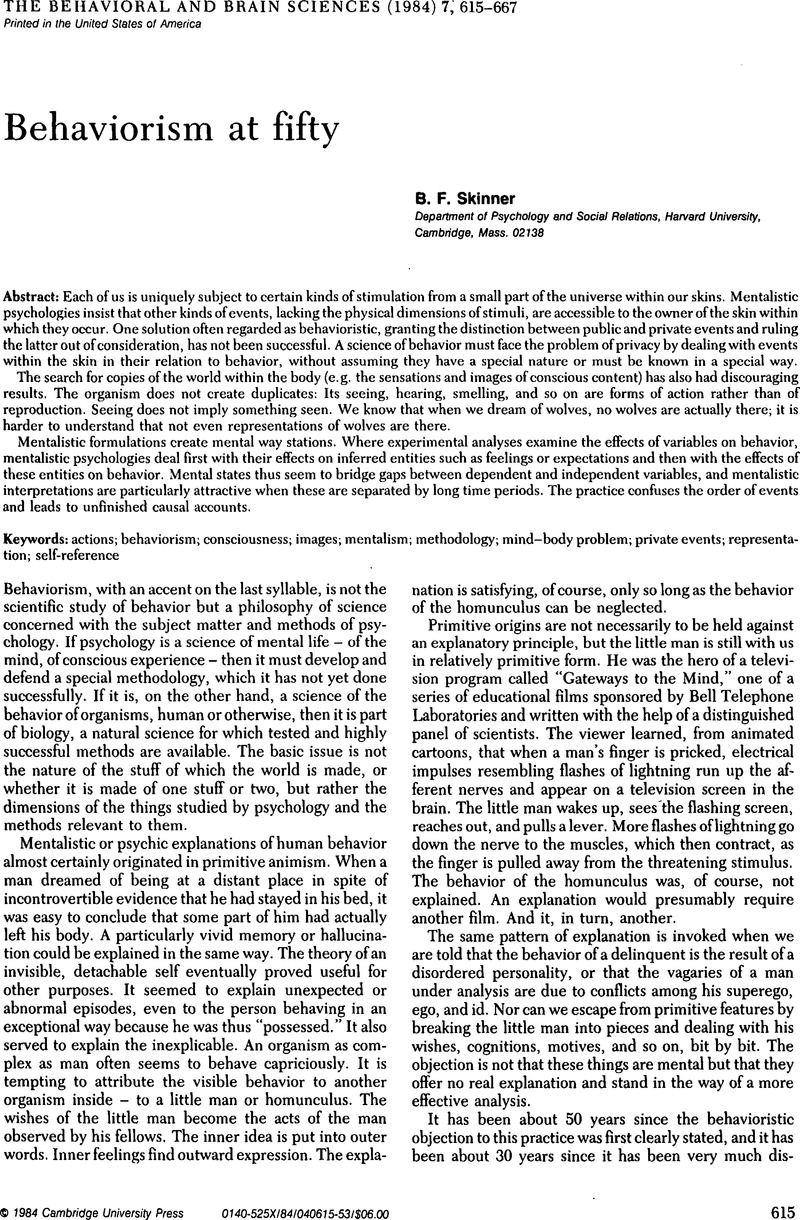Scriven, M. (
1956) A study of radical behaviorism. In:
The foundations of science and the concepts of psychology and psychoanalysis. Minnesota Studies in the Philosophy of Science, vol.
1, ed.
Feigl, H. &
Scriven, M..
University of Minnesota Press. [MAS]
Google Scholar 